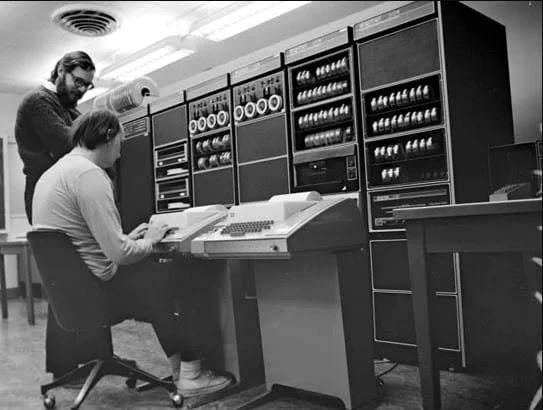Amid the contemporary landscape of operating systems, where names like Windows, macOS, and Linux are part of everyday conversation, there lies a venerable and pivotal predecessor'Unix. This operating system, developed in the late 1960s, has become the foundation upon which many of today's software and operating systems are built. With its enduring legacy, it's essential to take an in-depth look at Unix, demystifying this crucial piece of computing history.
The Origins of Unix
Unix began its journey in 1969 at AT&T's Bell Labs. The development was initiated by Ken Thompson, Dennis Ritchie, and a small team of developers. Frustrated by the limitations of existing systems and the cancellation of the Multics project'an early attempt at a unified operating system'they sought to create something new. What started as a small project on a spare PDP-7 computer would eventually become a revolution in computing.
A Philosophy of Simplicity and Power
From the outset, Unix was designed around core philosophies that set it apart. It aimed to provide a simple, yet powerful environment for programmers. The Unix philosophy emphasizes the use of small, modular utilities that do one thing and do it well, combined together in chains to accomplish complex tasks. This approach, encapsulated in the mantra Do One Thing and Do It Well, fosters flexibility and creativity.
Features That Made Unix Stand Out
Unix introduced many features that were groundbreaking at the time and still influence operating systems today. Among these were:
-
Multitasking: It allowed multiple processes to run simultaneously, a leap forward in computing efficiency.
-
Hierarchical File System: The introduction of a structure where files and directories are arranged within a single tree, making organization and navigation intuitive.
-
Pipes and Redirects: These allow the output of one program to serve as input to another, offering powerful data processing capabilities with simple commands.
-
Portability: Unlike many of its contemporaries, Unix could run on different hardware platforms, vastly increasing its adaptability and appeal.
The Birth of a Legacy
Unix's impact cannot be understated. It is the direct ancestor of a family tree that includes some of the most crucial operating systems in use today:
-
BSD (Berkeley Software Distribution): This derivative of Unix fostered innovations like the TCP/IP networking protocol, fundamental to the internet.
-
Linux: Perhaps Unix's most famous offspring, Linux's kernel, developed by Linus Torvalds in the 1991, owes much to Unix principles. Today, Linux powers a significant portion of the world's servers, smartphones (via Android), and is a preferred OS for programmers and researchers.
-
macOS: Apple's operating system for its line of Mac computers is directly derived from BSD, making it a Unix-based OS at its heart.
Unix Today
Despite its age, Unix, and especially its philosophy and architecture, remains highly influential. Modern operating systems, cloud computing platforms, and even embedded systems in devices around us owe much to Unix. It's celebrated not only for its technological contributions but also for its open and collaborative development ethos, prefiguring today's open-source movement.
Some direct descendants or systems inspired by Unix principles include the various BSD systems (like FreeBSD, OpenBSD), and of course, the ever-popular Linux and macOS. Furthermore, Unix's impact is acknowledged through POSIX (Portable Operating System Interface for Unix), a set of standards ensuring Unix-like systems are compatible with each other, guaranteeing a certain level of interoperability.
Demystifying Unix for Modern Users
For those accustomed to graphical user interfaces (GUIs), Unix may appear daunting with its command-line interface (CLI). However, learning Unix, or its principles through a Unix-like system such as Linux.




0 Comments
Post a Comment